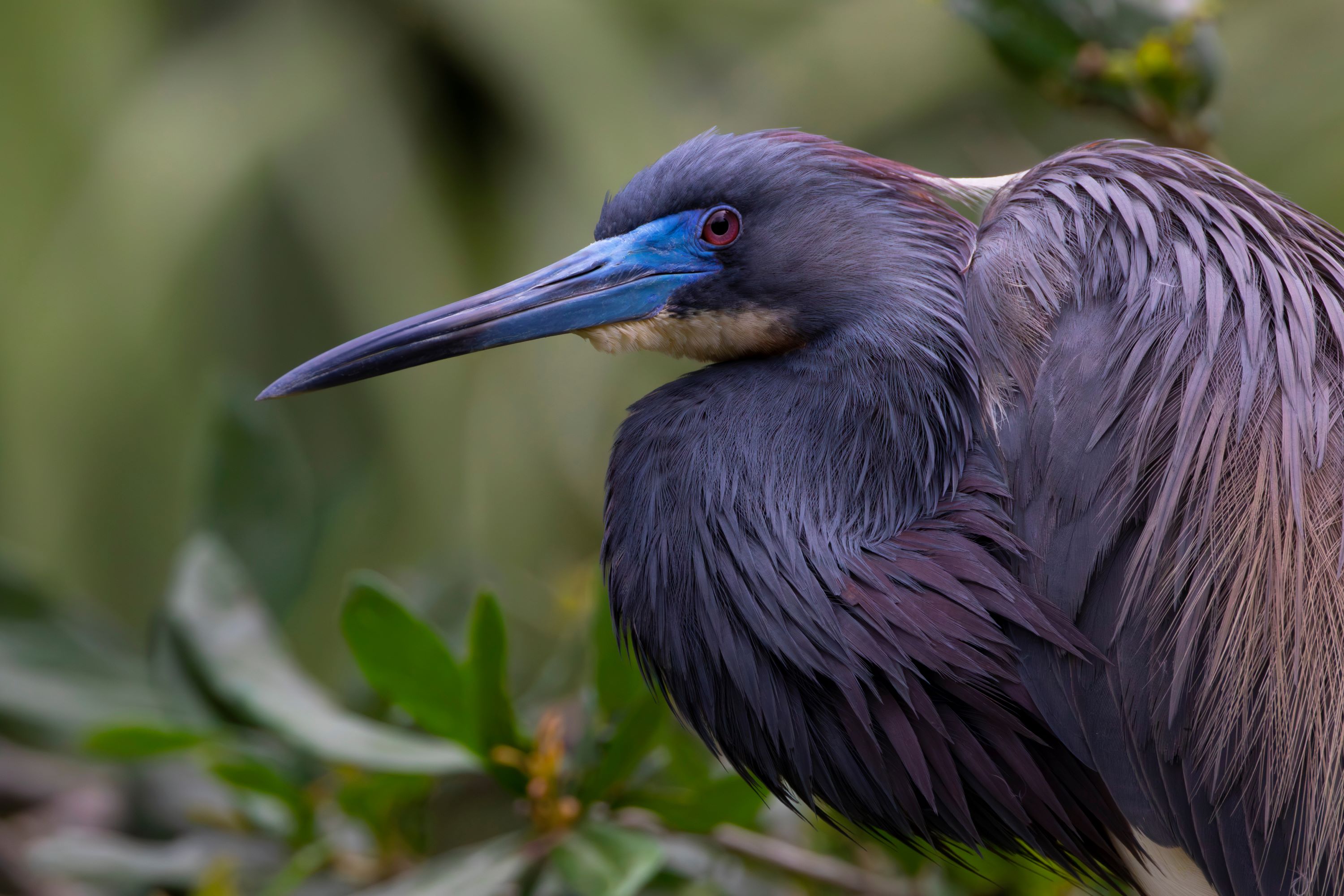
The Tricolored Heron: The Vibrant Coastal Dweller
Introduction to the Tricolored Heron
The Tricolored Heron, Egretta tricolor, is a striking and elegant bird belonging to the heron family, Ardeidae. Known for its vibrant plumage and slender build, this heron is a captivating sight in coastal and wetland habitats.
Physical Description
Medium-sized and slender, the Tricolored Heron stands about 56-76 cm tall. It boasts a unique three-toned color scheme with a blue-gray body, a white belly, and a rust-colored neck and head. During the breeding season, it displays long, filamentous plumes on its back.
Habitat and Distribution
This species is commonly found in estuaries, coastal marshes, mangroves, and tidal flats. The Tricolored Heron’s range extends from the southeastern United States along the Gulf Coast to the northern parts of South America.

Behavior and Lifestyle
Tricolored Herons are known for their active foraging behavior. They are often seen darting through shallow waters or flying gracefully with their long legs trailing behind. These birds are typically solitary feeders but may gather in groups during the breeding season.
Feeding Habits
Their diet consists mainly of small fish, amphibians, crustaceans, and insects. The Tricolored Heron employs various hunting strategies, such as standing still to ambush prey or chasing them actively in shallow waters.
Breeding and Nesting Habits
Breeding takes place in colonies, often alongside other wading bird species. They build their nests in trees or shrubs, usually over or near water. The nests are made of sticks and are relatively small and compact.

Egg Laying and Incubation
The female lays 3 to 4 pale blue-green eggs. Both parents share in the incubation duties, which last about 21 to 25 days. The elevated nests help to protect the young from potential ground predators.
Chick Rearing and Parental Care
Chicks are altricial, depending on their parents for food and protection. Both parents feed the chicks, and they fledge at about 7 to 8 weeks old, although they may remain near the nest for additional care.
Vocalizations and Communication
The Tricolored Heron is not particularly vocal outside of the breeding season. During mating and nesting, however, it produces a range of sounds including croaks and clucks for communication.

Conservation Status
The Tricolored Heron is listed as Least Concern by the IUCN. While its population is stable, it faces threats from habitat loss and environmental pollution, particularly in coastal areas.
Similar Species and Taxonomy
Part of the order Pelecaniformes, the Tricolored Heron is closely related to other species in the Egretta genus, such as the Little Blue Heron and the Snowy Egret. It is easily distinguishable by its unique coloration and smaller size.
The Tricolored Heron in Utah
The Tricolored Heron is primarily a coastal species and is not commonly found in Utah. However, occasional sightings can occur, especially during migration. In Utah, birdwatchers are more likely to observe other heron species native to the region.

Conclusion
The Tricolored Heron, Egretta tricolor, is a remarkable and colorful presence in the wetlands and coastal regions of the Americas. Its vibrant plumage and dynamic feeding habits make it a joy to observe for bird enthusiasts and nature lovers alike. Protecting the natural habitats of the Tricolored Heron is essential for the preservation of this species and the diverse ecosystems it inhabits.